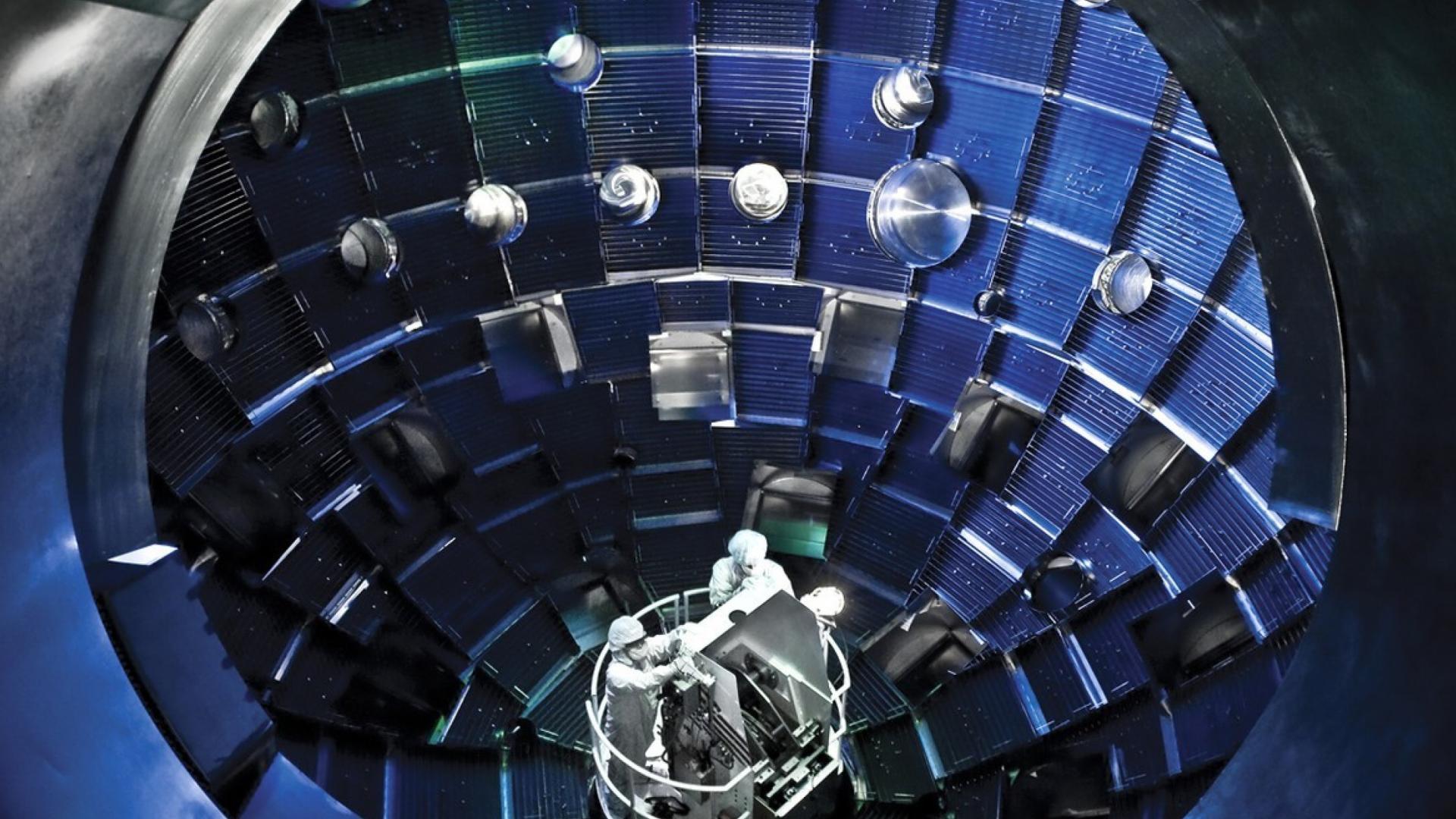After more than 60 years of hard work, innovation and setbacks, the National Ignition Facility laser at the Lawrence Livermore National Laboratory in the San Francisco Bay Area has achieved a formidable milestone in the path towards the realisation of controlled thermonuclear fusion on Earth.
Their recent experimental results show that the energy produced by fusion reactions is strikingly close to the energy initially supplied to the target by the lasers – that is, an energy gain of unity is now within our grasp. This is an important success of the US science programme in inertial confinement fusion.
International collaboration
During all these years, UK scientists have worked closely with US as well as EU colleagues. UK universities, and the University of Oxford in particular, through the Oxford Centre for high Energy Density Science (OxCHEDS), have contributed with training students and postdocs in these research fields as well as developing new fusion concepts that could achieve much higher energy gains – a necessary requirement for a fusion power plant that may address some of today's energy and environmental issues.
Professor Justin Wark, Director of OxCHEDS, is the UK academic member of the Peer Review Panel that gives direct advice to LLNL on the NIF fusion program. In reaction to this news, he comments: 'This is a fantastic result and we congratulate our US colleagues on this significant milestone in the goal for full ignition.'
New opportunities
Professor Peter Norreys adds, 'We are working closely with leading fusion scientists from the US – based in the University of Rochester with the Los Alamos and Lawrence Livermore National Laboratories – to reduce the drive energy requirements for fusion energy gain using novel concepts.
'Our graduate and undergraduate students are hugely excited by the opportunities to explore the parameter space that this extraordinary achievement from NIF has opened. Over the summer, undergraduates from University College and Trinity College, working with us and our graduate students in Atomic and Laser Physics, have made significant advances in new target and laser driver designs.
Accelerating progress
'Oxford is leading a large international collaboration for an UKRI-funded experiment planned for early 2022 on the Vulcan laser facility at the Central Laser Facility, Rutherford Appleton Laboratory to test essential physics of these new target designs. We intend to deepen and further expand the collaboration with US scientists in future, building upon longstanding scientific relationships and distinguished service on forefront advisory panels by our senior academics, to accelerate the progress made towards understanding the physics basis of ignition and high gain.'
OxCHEDS comprises the following professors and their groups: Justin Wark (Director), Gianluca Gregori, Simon Hooker, Peter Norreys, Steve Rose and Sam Vinko.
But, even with a gain of unity new science related to a deeper understanding of stars, planets and the early Universe can be unlocked. In the UK, this work has continued, albeit at a reduced rate, even under the constrained funding of these past years.
Unravelling the dynamics of matter
Professor Gianluca Gregori says, 'Our research groups in the Department of Physics have already been leading experiments at the National Ignition Facility laser to study processes related to astrophysical turbulence and magnetic field generation in galaxy clusters, and to unravel the dynamics of matter compressed under extreme pressures as found in the cores of giant planets.
'We trust that these new and important results from overseas will again drive the UK community to seek and test novel fusion research for the years to come and make controlled thermonuclear fusion a concrete reality in the near future. We also encourage the research councils and other agencies to consider increased support in this important strategic area.'


